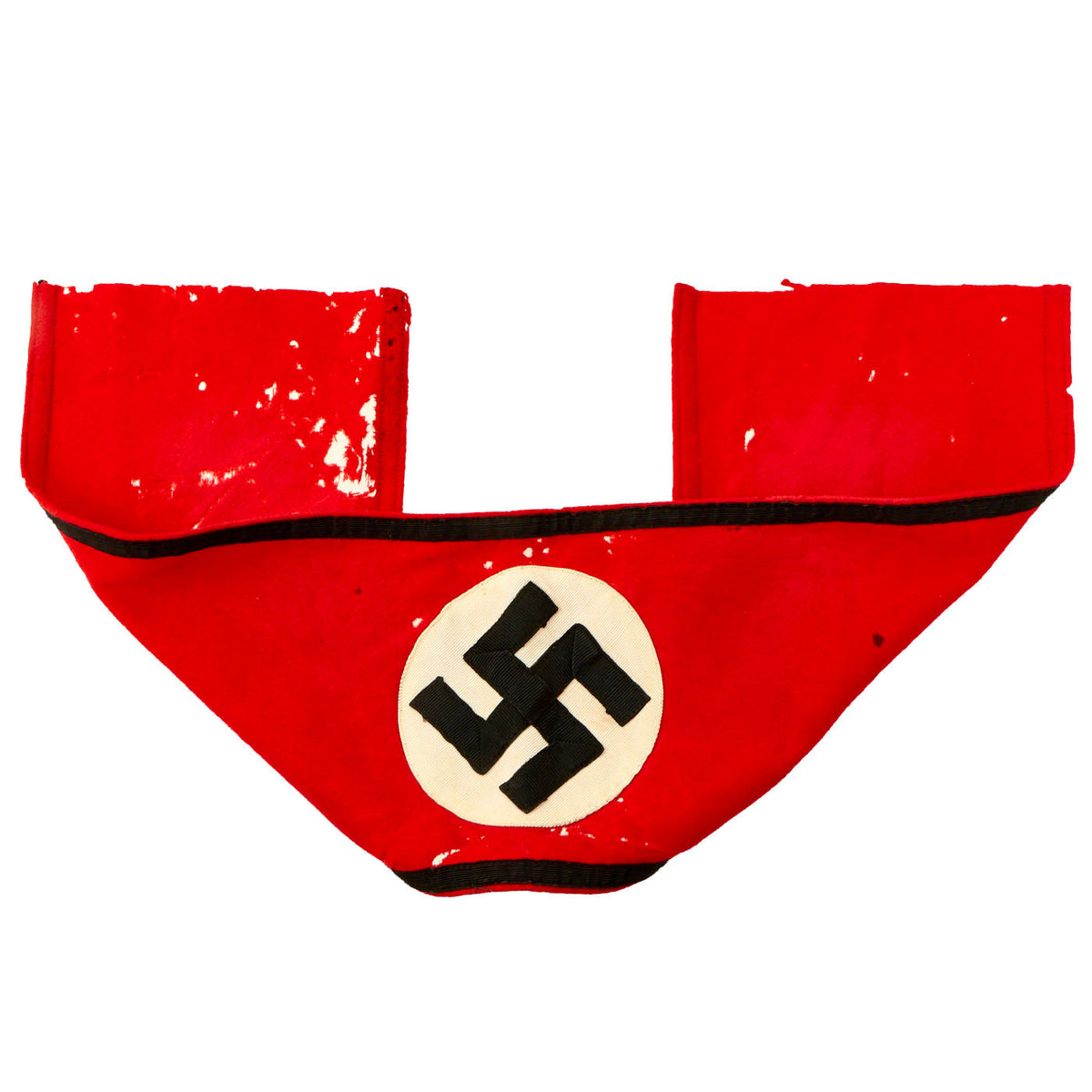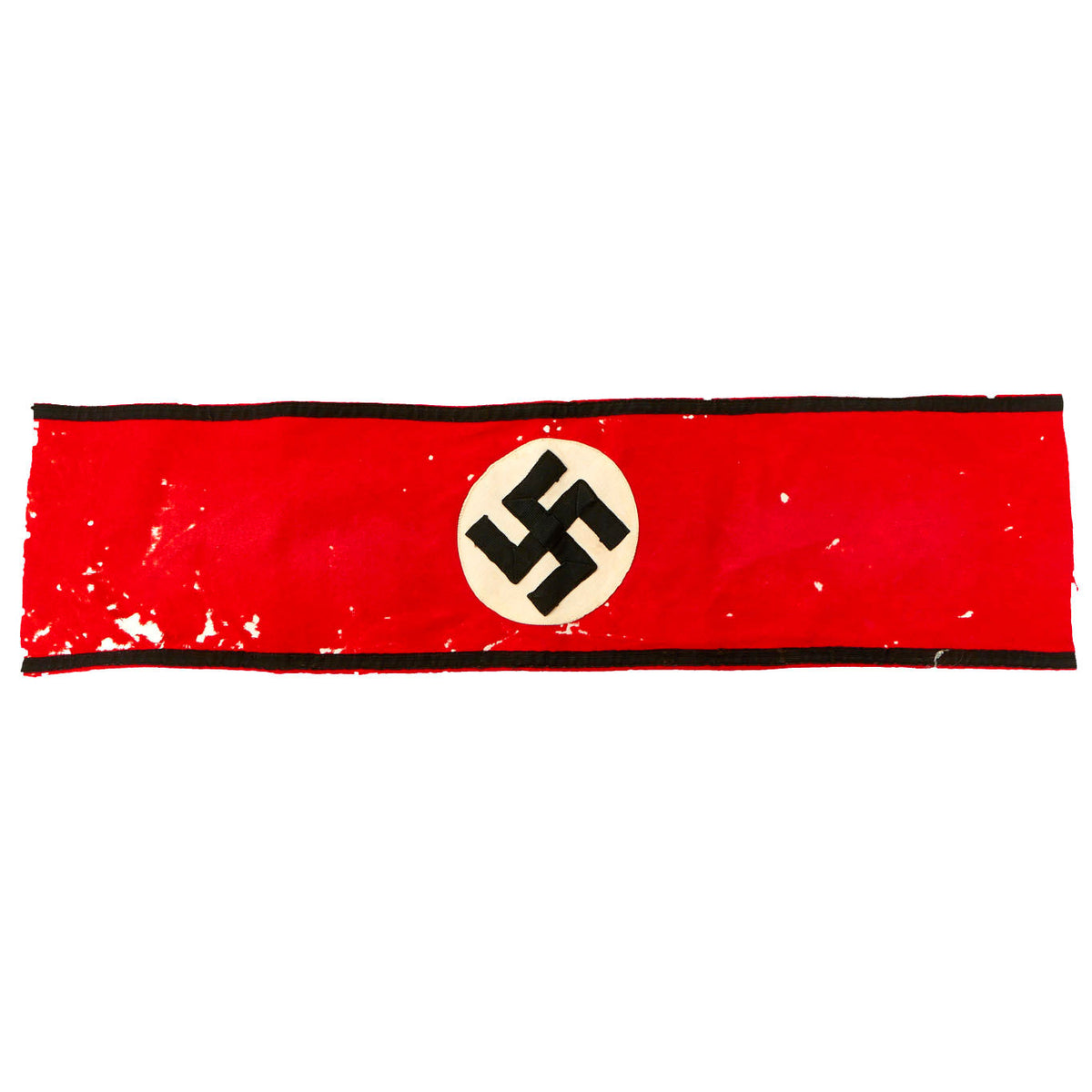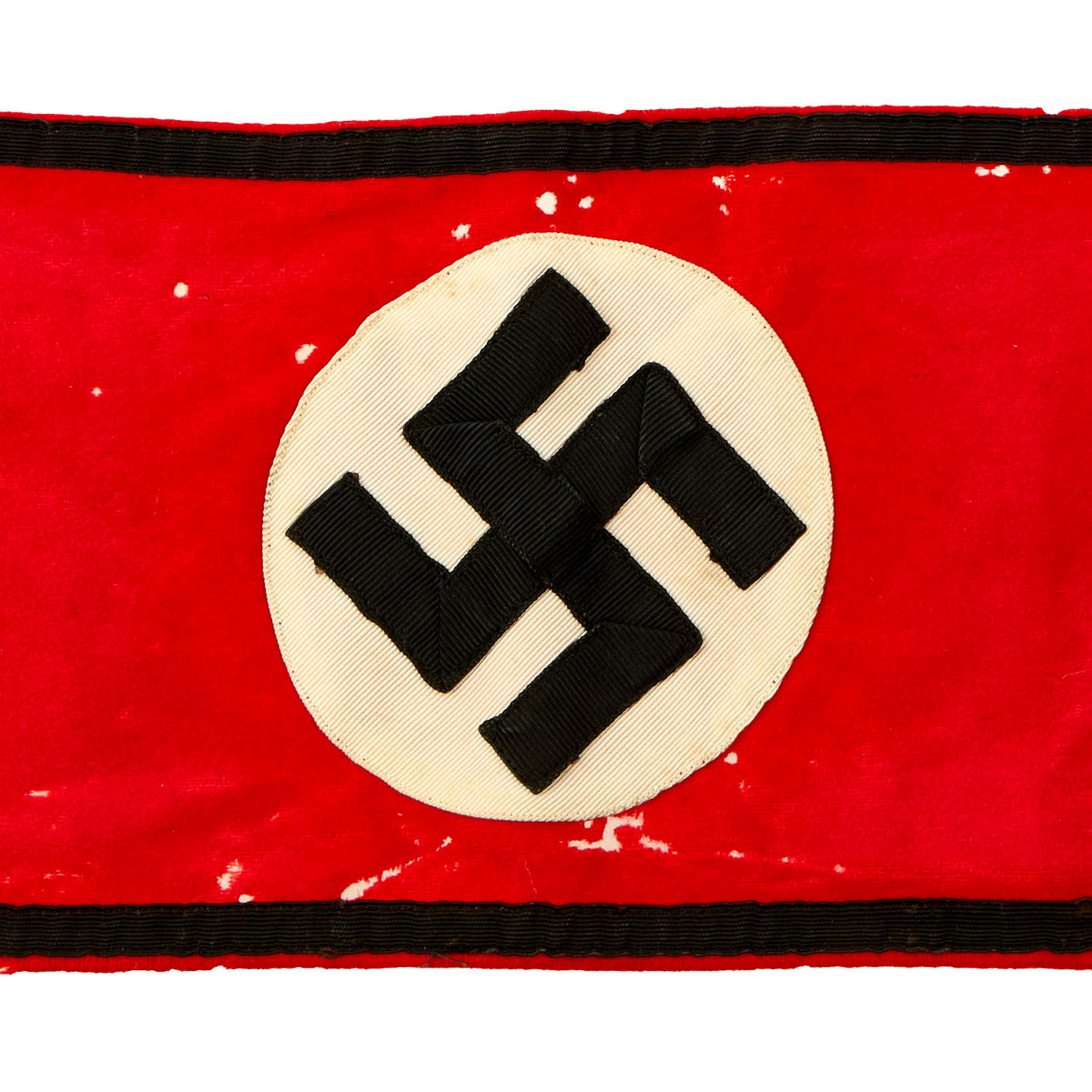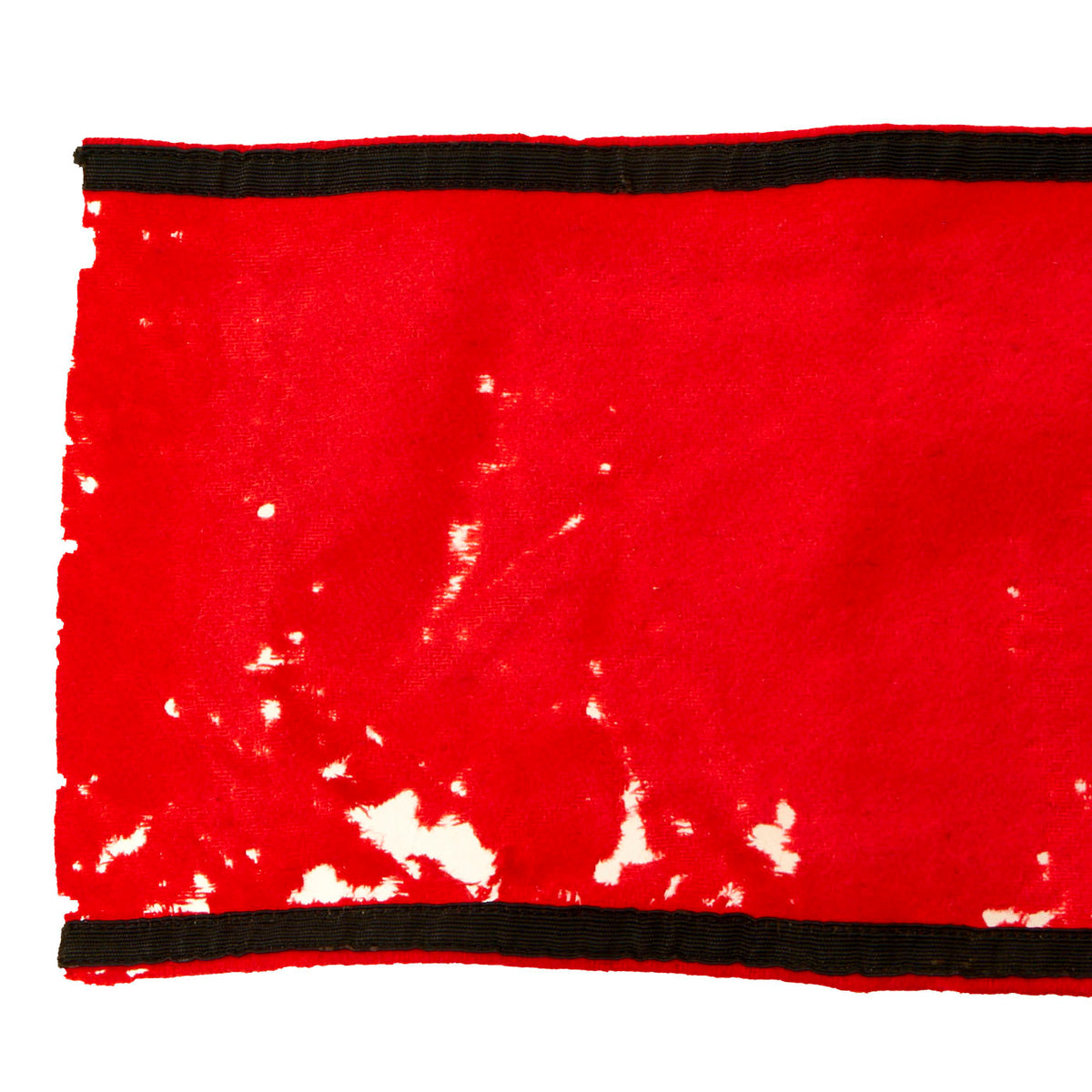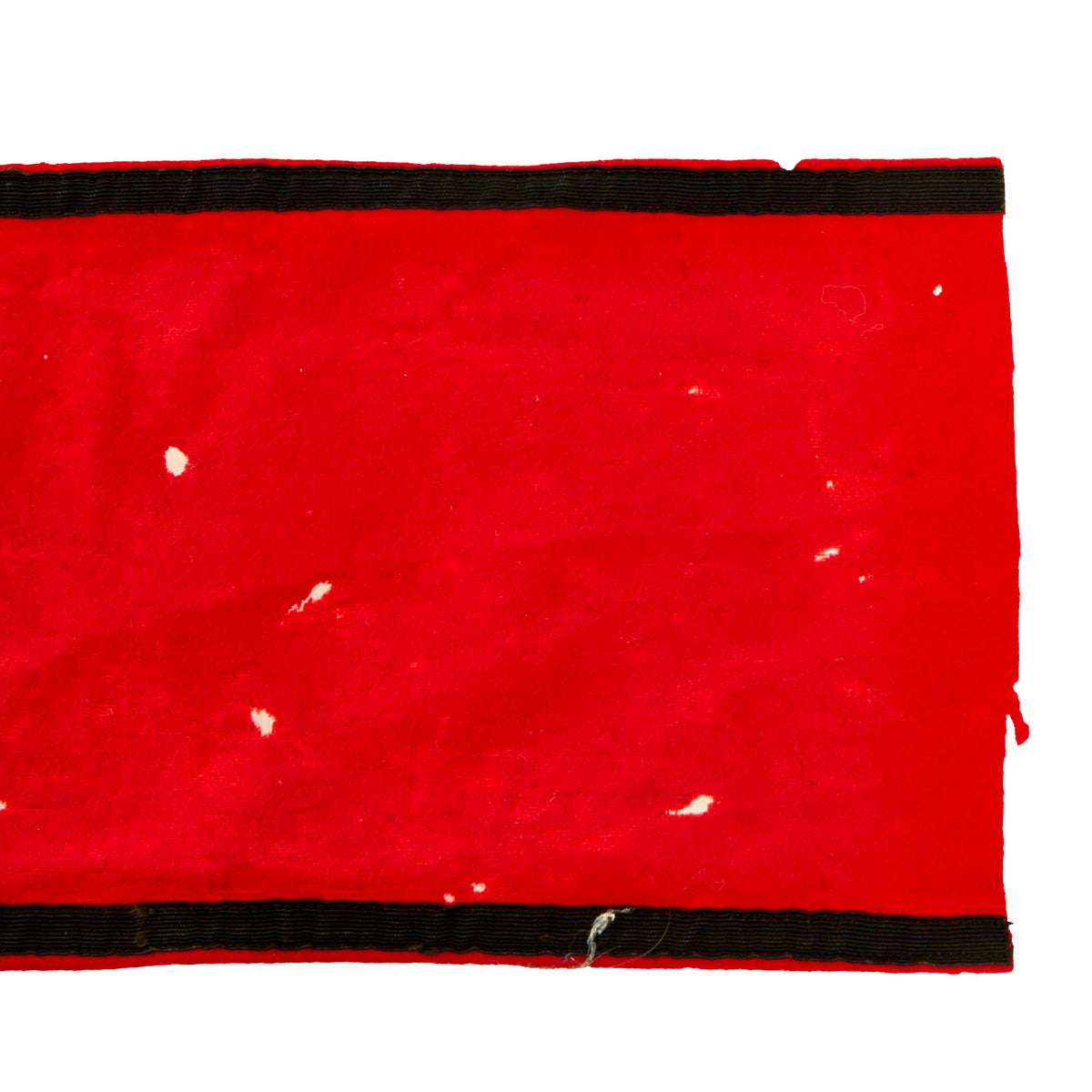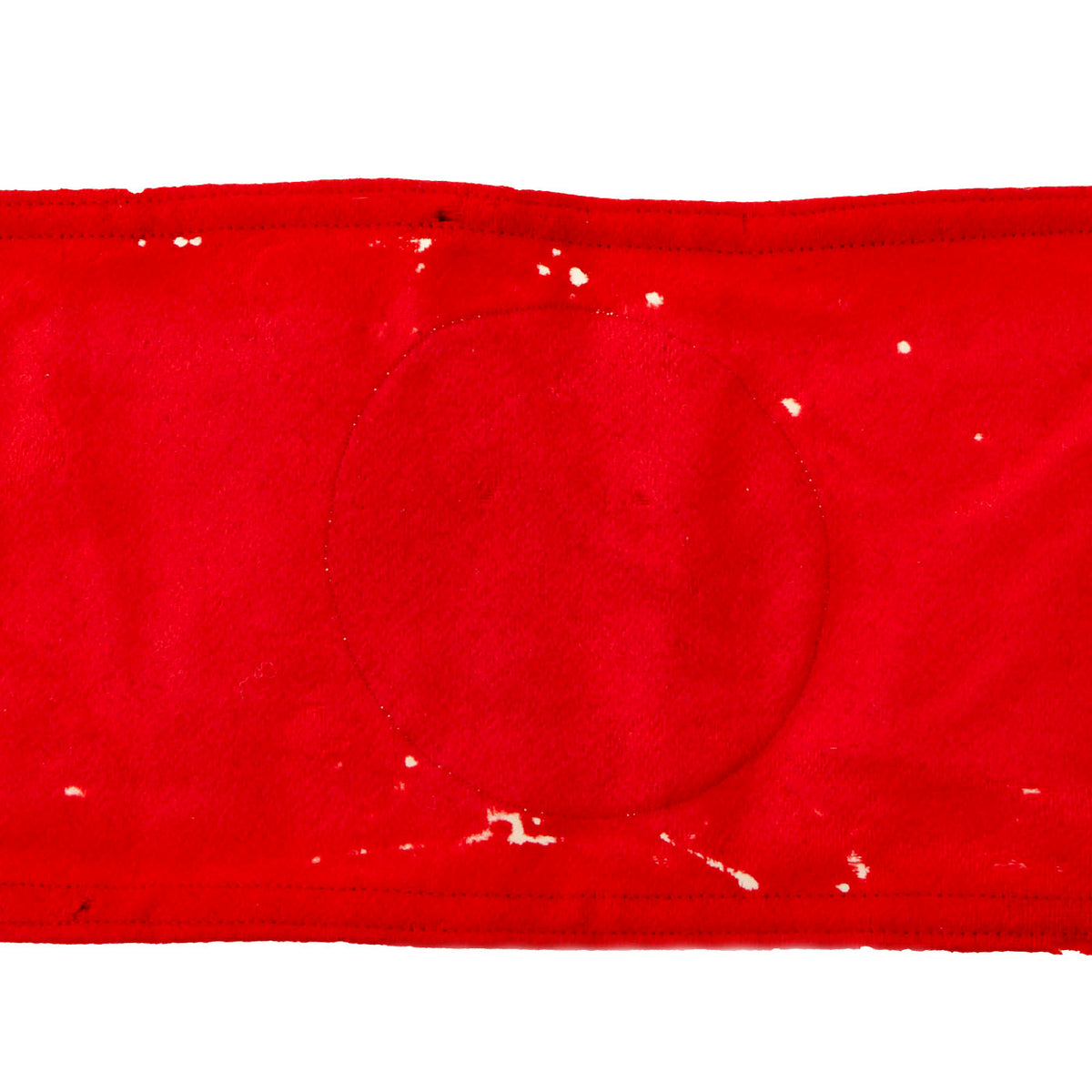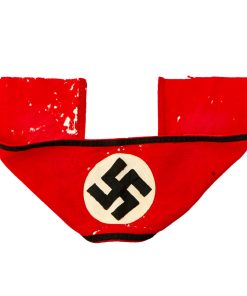Original German Pre-WWII SS Member Wool and Rayon Multi Piece Armband Original Items
$ 595,00 $ 178,50
Original Item: Only One Available: The SS (Schutzstaffel – ‘Protection Squadron’) was originally formed in 1925, ostensibly to act as a small, loyal bodyguard unit to protect the Führer, Adolf AH. Under the direction of the Reichsführer-SS Heinrich Himmler, the SS grew to be the most ruthless and feared organization of the 20th century. They were the vanguard of NSDAPsm and eventually controlled nearly every function of German life and much of Occupied Europe.
This is a very nice SS Member’s Kampfbinde (Armband), with a red woven wool band, and a multipiece rayon swas (hooked cross) sewn onto the front. This armband is more or less identical to the standard armband of the National Socialist German Workers’ Party (Nationalsozialistische Deutsche Arbeiterpartei, abbreviated NSDAP), except for the black rayon borders on the edges.
It is in lovely worn condition, and measures approximately 19″ x 4 7/8″, and was sewn together in the back. It appears that the armband was forcibly removed from a uniform and cut along the stitched seam. There is wear to the exterior, and discoloration of the white circle. It also has suffered some mothing over the years but displayed with a red felt backing it would be almost unnoticeable. Regardless, this is a rare example of a historic armband!
Nearly every military, civil, political and paramilitary organization in existence during the Third Reich used armbands. Armbands were worn on military and civilian uniforms and also on civilian clothes, from suit jackets to work clothing. They were used to denote membership in organizations, to indicate a specific role or function of the bearer, and as insignia of rank. Many organizations would change the design of their armbands over time, which added to the variety produced. These were manufactured in countless variations, ranging from simple printed bands to elaborately hand-embroidered pieces of the highest quality. Some NSDAP armbands were worn by all members of large organizations and were made by the millions. Others were intended for use at a specific time and place and were unique. Many types were made in very limited numbers. Some bore metal insignia or special identifiers that indicated the wearer’s rank, unit affiliation, or nationality. Armbands were sometimes but not always marked with ink stamps by the issuing authorities.
Fast Shipping with Professional Packaging
Thanks to our longstanding association with UPS FedEx DHL, and other major international carriers, we are able to provide a range of shipping options. Our warehouse staff is expertly trained and will wrap your products according to our exact and precise specifications. Prior to shipping, your goods will be thoroughly examined and securely secured. We ship to thousands clients each day across multiple countries. This shows how we're dedicated to be the largest retailer on the internet. Warehouses and distribution centres can be located throughout Europe as well as the USA.
Note: Orders with more than one item will be assigned a processing date depending on the item.
Before shipping before shipping, we'll conduct a thorough inspection of the items you have ordered. Today, the majority of orders will be delivered within 48 hours. The delivery time will be between 3-7 days.
Returns
The stock is dynamic and we cannot completely manage it because multiple stakeholders are involved, including our factory and warehouse. So the actual stock may alter at any time. It's possible that you may not receive your order once the order has been made.
Our policy is valid for a period of 30 days. If you don't receive the product within 30 days, we are not able to issue a refund or an exchange.
You can only return an item if it is unused and in the same state as the day you received it. You must have the item in its original packaging.
Related products
Uncategorized
Uncategorized
Uncategorized
Uncategorized
Uncategorized
Uncategorized
Uncategorized
Uncategorized
Uncategorized
Uncategorized
Uncategorized
Uncategorized
Uncategorized
Uncategorized
Uncategorized
Uncategorized
Uncategorized
Angolan Rebel 1970s era 60mm Inert Display Mortar from Angolan Civil War Original Items
Uncategorized
Uncategorized
Armoured Fighting Vehicles of the World: AFVs of World War One (Hardcover Book) New Made Items
Uncategorized
Band of Brothers ORIGINAL GERMAN WWII Le. F.H. 18 10.5cm ARTILLERY PIECE Original Items
